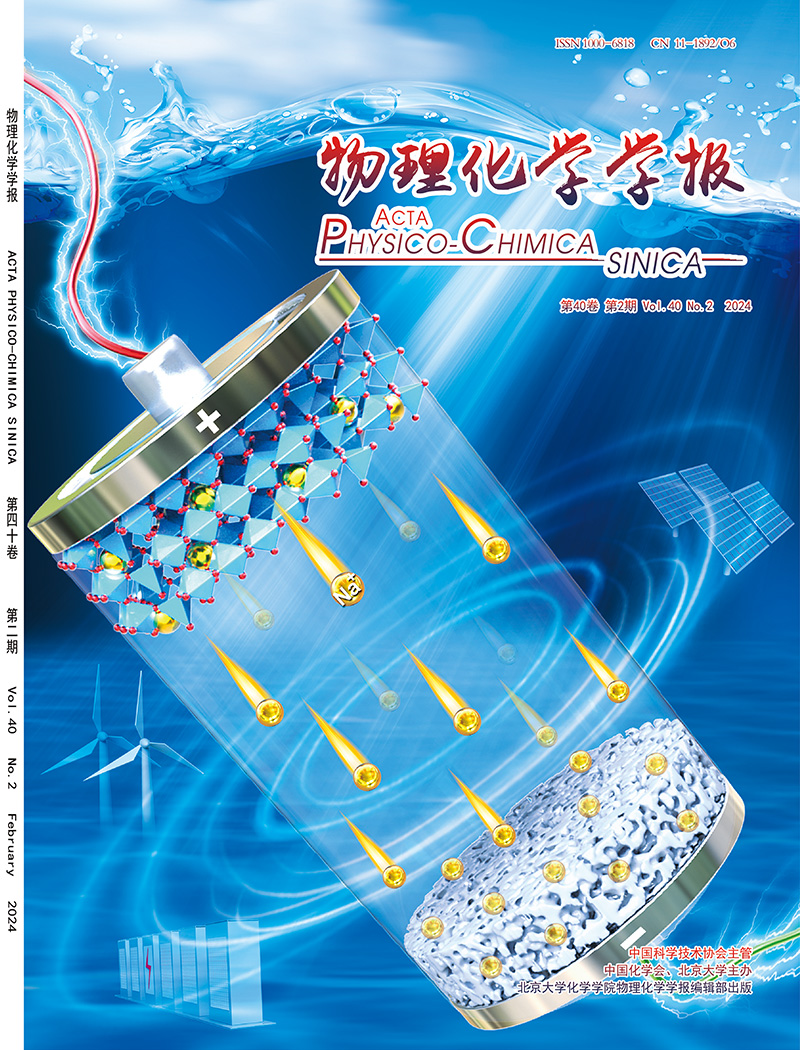Accelerating the reconstruction of NiSe2 by Co/Mn/Mo doping for enhanced urea electrolysis
IF 13.5
2区 化学
Q1 CHEMISTRY, PHYSICAL
引用次数: 0
Abstract
As a highly promising renewable energy technology, the urea oxidation reaction (UOR) not only enables efficient utilization of urea wastewater but also provides an effective alternative for hydrogen production via water electrolysis, thereby reducing the energy consumption of conventional electrolysis. Therefore, the development of UOR catalysts with high catalytic activity and long-term stability is of great significance for advancing clean energy technologies. In this study, a nickel-based selenide catalyst (NiCoMnMo–Se) with coexisting nanoparticles and nanosheets was synthesized using a NaBH4 reduction and selenization strategy. X-ray photoelectron spectroscopy (XPS), ultraviolet–visible (UV–vis) and in-situ bode phase plots, revealed that the synergistic effect of Mn and Mo regulated the electronic structure of Ni, enhancing the conductivity of nickel selenide and accelerating charge transfer kinetics, which facilitates the rapid transformation of Ni2+/Co2+ into active Ni3+/Co3+ and significantly reduces the onset potential of NiCoMnMo–Se. During the UOR process, Mo and Se are oxidized to form molybdate and selenate, which subsequently dissolve into the electrolyte. This transformation results in the partial conversion of the original spherical nanoparticle surfaces into nanosheets, thereby exposing more Ni(Co)OOH active sites and significantly enhancing the UOR reaction. Additionally, the introduction of Mn stabilizes the active sites, thereby improving the overall stability of the catalyst. As anticipated, the synthesized NiCoMnMo–Se catalyst demonstrates outstanding electrocatalytic performance and stability in the UOR process, achieving a current density of 50 mA cm−2 at a potential of only 1.38 V vs. RHE (reversible hydrogen electrode), with a voltage increase of only 3.0% after 50 h of operation at a 50 mA cm−2. When NiCoMnMo–Se and commercial Pt/C were assembled into a dual-electrode system for alkaline urea electrolysis, it only requires 1.59 V vs. RHE to achieve a current density of 50 mA cm−2. This paper designs an efficient and stable Ni-based selenide catalyst, which is expected to promote the further development of selenides in relevant energy technologies.

Co/Mn/Mo掺杂加速尿素电解中nis2的重构
作为一种极具前景的可再生能源技术,尿素氧化反应(UOR)不仅能高效利用尿素废水,还能有效替代水电解制氢,从而降低传统电解的能耗。因此,开发具有高催化活性和长期稳定性的 UOR 催化剂对于推动清洁能源技术的发展具有重要意义。本研究采用 NaBH4 还原和硒化策略合成了纳米颗粒和纳米片共存的镍基硒化物催化剂(NiCoMnMo-Se)。X 射线光电子能谱(XPS)、紫外可见光(UV-vis)和原位 Bode 相图显示,锰和钼的协同作用调节了镍的电子结构,增强了硒化镍的导电性并加速了电荷转移动力学,从而促进了 Ni2+/Co2+ 向活性 Ni3+/Co3+ 的快速转化,并显著降低了 NiCoMnMo-Se 的起始电位。在 UOR 过程中,Mo 和 Se 被氧化形成钼酸盐和硒酸盐,随后溶解到电解液中。这种转变导致原来的球形纳米粒子表面部分转化为纳米片,从而暴露出更多的 Ni(Co)OOH 活性位点,显著增强了 UOR 反应。此外,锰的引入稳定了活性位点,从而提高了催化剂的整体稳定性。正如预期的那样,合成的 NiCoMnMo-Se 催化剂在 UOR 反应过程中表现出了出色的电催化性能和稳定性,与 RHE(可逆氢电极)相比,在电位仅为 1.38 V 的条件下,电流密度达到 50 mA cm-2,在 50 mA cm-2 的条件下运行 50 小时后,电压仅上升 3.0%。当 NiCoMnMo-Se 和商用 Pt/C 组装成双电极系统用于碱性尿素电解时,只需要 1.59 V(相对于 RHE)的电压就能达到 50 mA cm-2 的电流密度。本文设计了一种高效稳定的镍基硒化物催化剂,有望推动硒化物在相关能源技术中的进一步发展。
本文章由计算机程序翻译,如有差异,请以英文原文为准。
求助全文
约1分钟内获得全文
求助全文

 求助内容:
求助内容: 应助结果提醒方式:
应助结果提醒方式:


